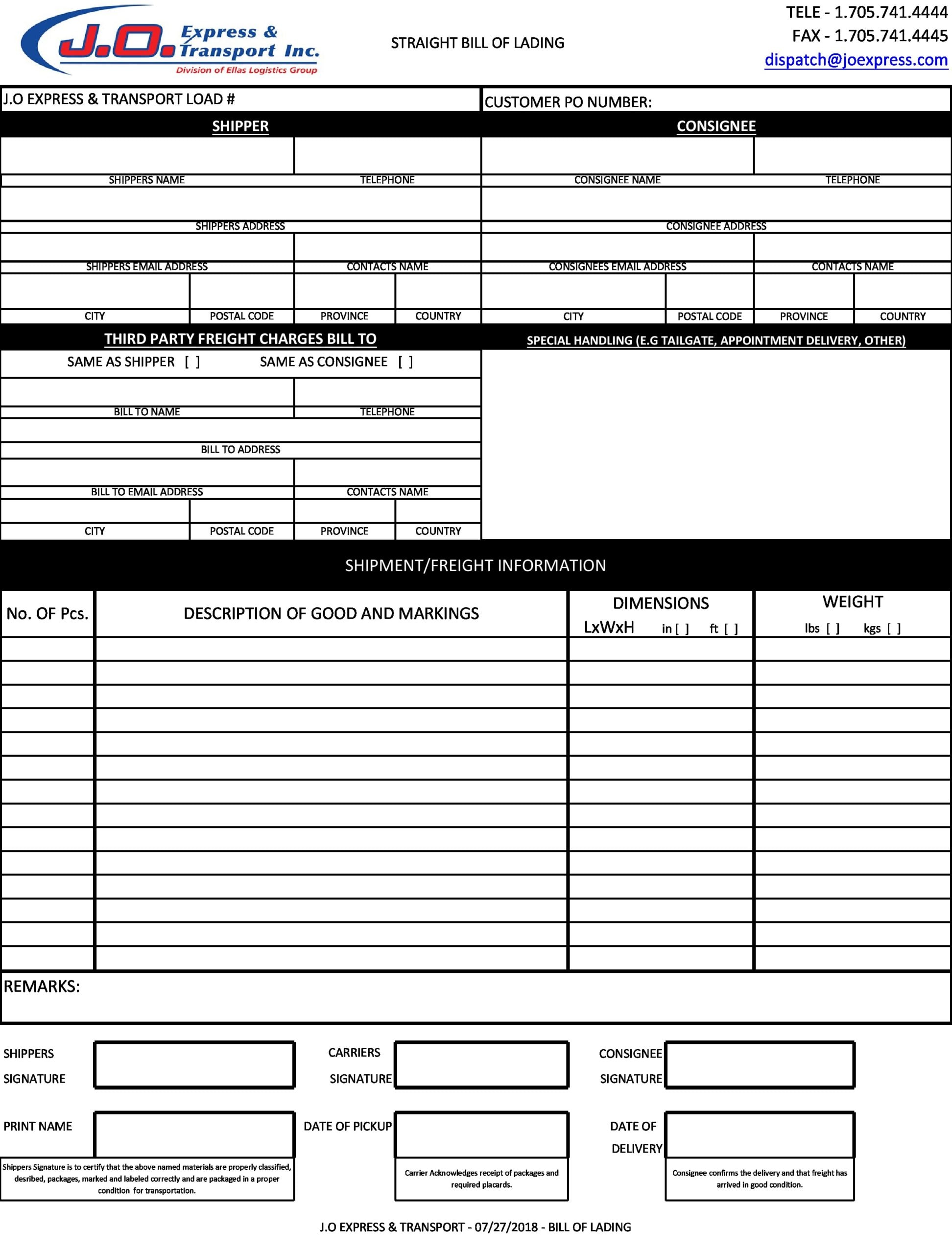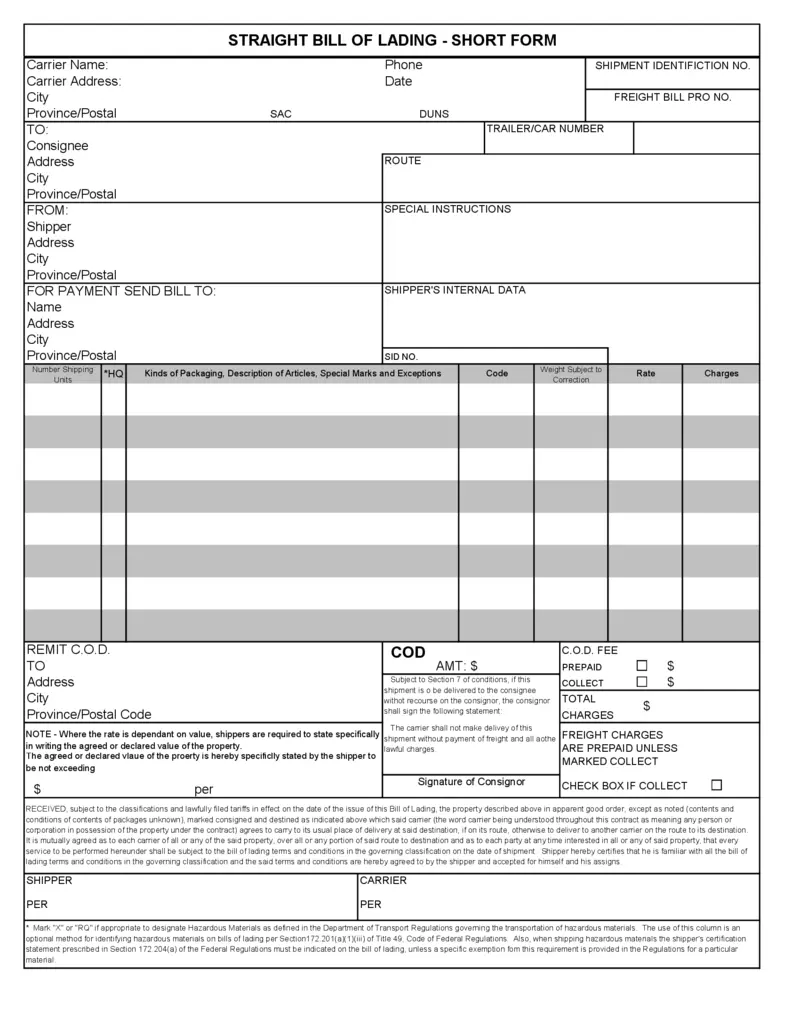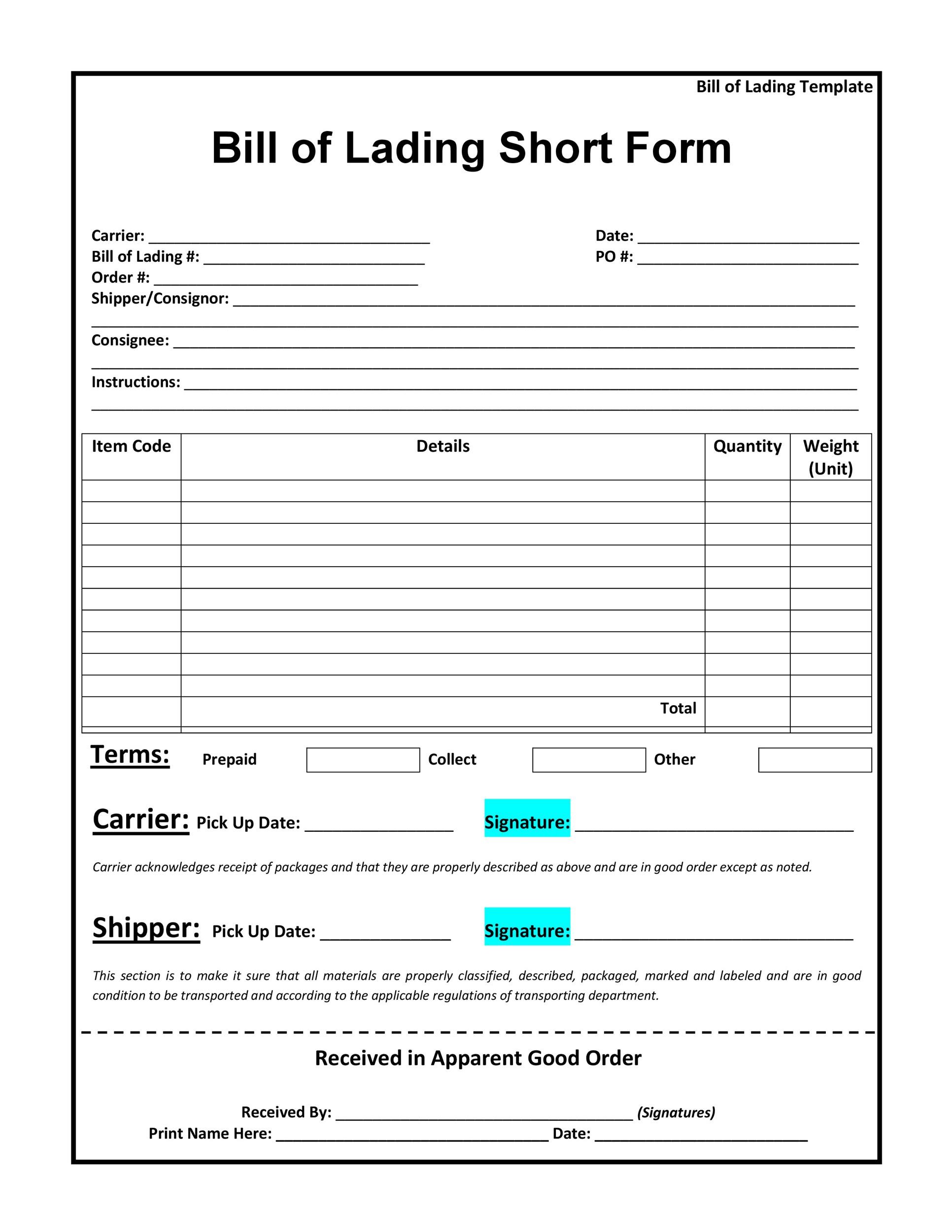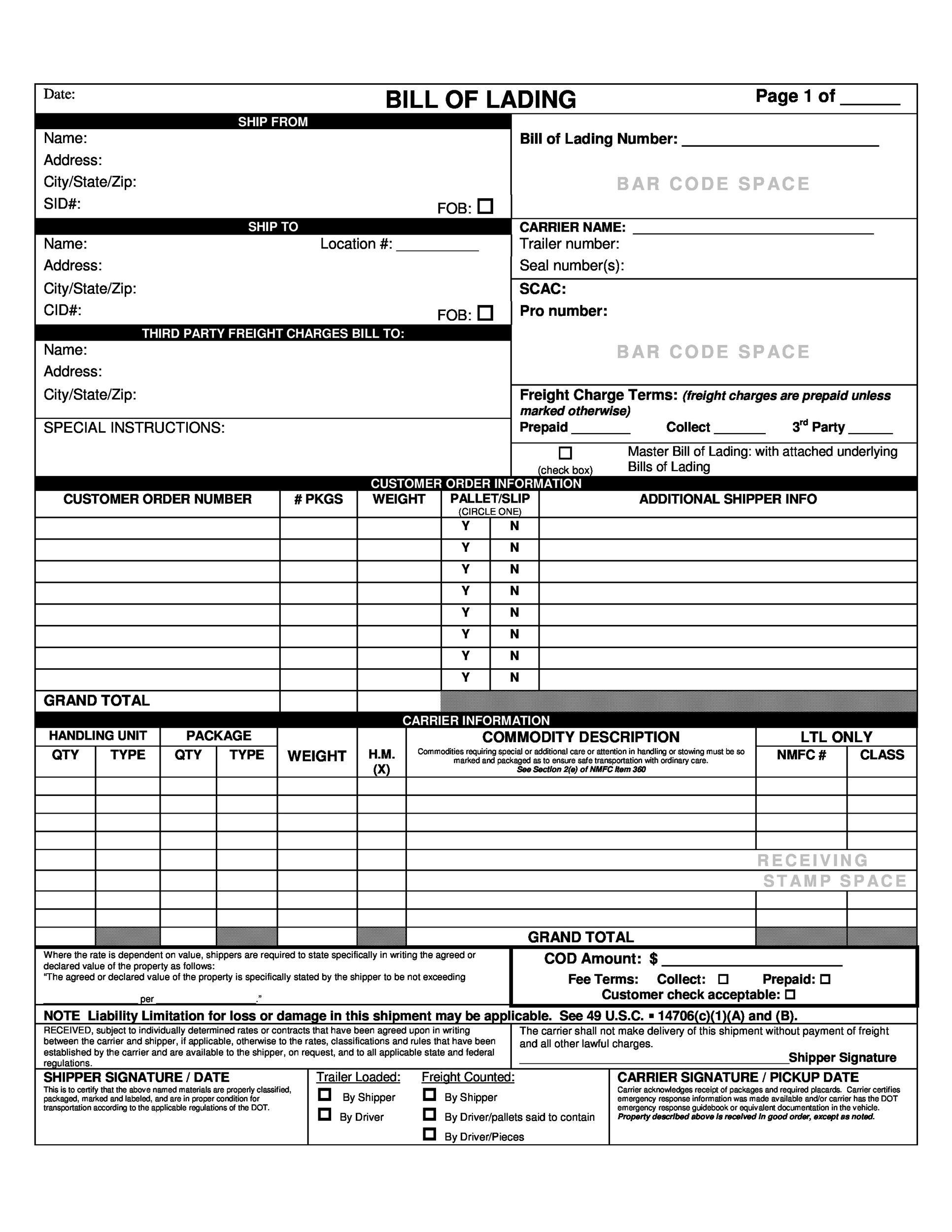A generic bill of lading form is a legally binding contract, a receipt for goods, and a document of title, proving the shipper’s agreement with the carrier and their ownership of the goods. It is an essential document in the shipping industry, serving as a crucial record of the transaction between the shipper and the carrier.
In this article, we will explore the significance of a generic bill of lading form, why it is necessary, and how to use it effectively. We will also provide examples and tips for successful bill of lading completion.
What is a Generic Bill of Lading Form?
A generic bill of lading form is a standardized document that outlines the details of a shipment, including the type and quantity of goods, the names and addresses of the shipper and the carrier, and the terms and conditions of the transportation agreement. It serves as proof that the shipper has transferred the goods to the carrier, and that the carrier has agreed to transport the goods to the specified destination.
This form is legally binding and can be used as evidence in case of disputes or claims. It protects both the shipper and the carrier, ensuring that the terms of the agreement are clearly stated and agreed upon by both parties.

Why is a Generic Bill of Lading Form Necessary?
A generic bill of lading form is necessary for several reasons:
1. Legal Protection
By using a bill of lading, both the shipper and the carrier are protected legally. It clearly outlines the responsibilities and liabilities of each party, reducing the risk of disputes or claims. In case of a dispute, the bill of lading serves as evidence of the agreement between the shipper and the carrier.
2. Proof of Ownership
A bill of lading serves as proof of ownership of the goods being transported. It provides documentation that the shipper is the rightful owner of the goods and has the authority to transfer them to the carrier for transportation.
3. Receipt for Goods
A bill of lading acts as a receipt for the goods being shipped. It includes information such as the type and quantity of goods, allowing both parties to verify that the shipment is accurate and complete.
4. Document of Title
A bill of lading also serves as a document of title, meaning that it can be used to transfer ownership of the goods. In some cases, the bill of lading can be endorsed and transferred to a third party, who then becomes the new owner of the goods.
How to Use a Generic Bill of Lading Form
Using a generic bill of lading form is straightforward. Here are the steps to follow:
1. Fill in the Shipper and Carrier Information
Start by filling in the shipper’s and carrier’s names, addresses, and contact information. Make sure to provide accurate and up-to-date information to ensure smooth communication between the parties.
2. Describe the Goods
Provide a detailed description of the goods being shipped, including the type, quantity, and any special handling instructions. This information will help the carrier handle the goods appropriately and avoid any damage or mishandling.
3. Specify the Terms and Conditions
Include the terms and conditions of the transportation agreement, such as the mode of transportation, the delivery date, and any insurance coverage. Clearly state any additional charges or fees that may apply.
4. Sign and Date the Form
Both the shipper and the carrier should sign and date the bill of lading to indicate their agreement to the terms and conditions stated in the document. This signature serves as proof that both parties have read and understood the contents of the bill of lading.
5. Provide Copies to the Parties Involved
Make copies of the completed bill of lading and provide them to the shipper, the carrier, and any other parties involved in the shipment. This ensures that everyone has a record of the transaction and can refer to it if needed.
Examples of Generic Bill of Lading Forms




Tips for Successful Bill of Lading Completion
Here are some tips to ensure the successful completion of a bill of lading:
- Provide Accurate Information: Double-check all the information provided on the bill of lading to ensure accuracy. Any errors or discrepancies can lead to delays or disputes.
- Be Specific: Provide detailed descriptions of the goods being shipped, including any unique characteristics or handling requirements.
- Communicate Clearly: Communicate the terms and conditions of the transportation agreement to avoid misunderstandings or disagreements.
- Keep Copies: Keep copies of the completed bill of lading for your records. These copies can be used as evidence in case of disputes or claims.
- Review and Understand: Take the time to review and understand the contents of the bill of lading before signing. If you have any questions or concerns, seek clarification from the other party.
- Follow Legal Requirements: Ensure that the bill of lading complies with legal requirements and regulations. This will help protect your rights and interests in case of legal disputes.
- Maintain Open Communication: Maintain open communication with the carrier throughout the shipping process. This will help address any issues or concerns that may arise.
- Keep a Record: Keep a record of all bills of lading for future reference. This will help you track your shipments and maintain a history of your business transactions.
In Conclusion
A generic bill of lading form is a vital document in the shipping industry. It serves as a legally binding contract, a receipt for goods, and a document of title, proving the shipper’s agreement with the carrier and their ownership of the goods.
By understanding its importance and using it effectively, you can ensure smooth and successful shipping transactions.
Generic Bill of Lading Form – Download
- Free Printable Exercise Planning Template - November 24, 2025
- Free Executive Summary Template (Word) - November 20, 2025
- Free Executive Resume Template (Word) - November 20, 2025